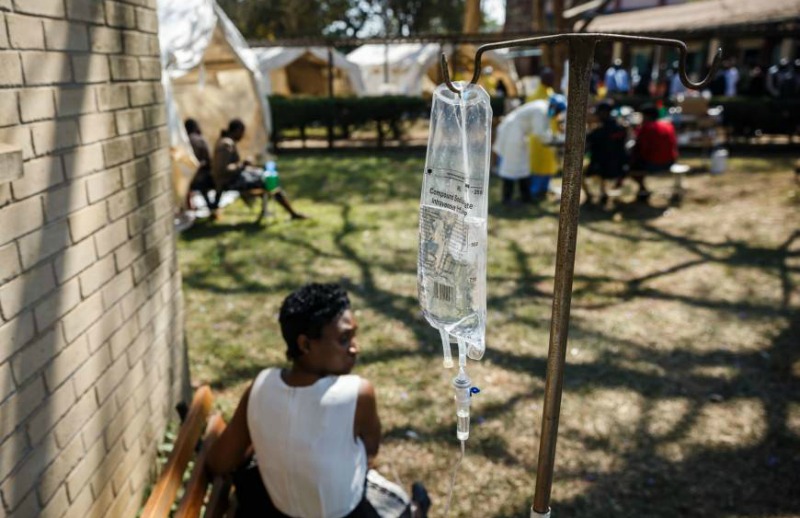ZIMBABWE experienced a highly resistant cholera outbreak between September 2018 to March 2019 where over 10 000 suspected cases of the water-borne disease were recorded.
This was revealed in the latest edition of the New England Journal of Medicine (NEJM) where a local research team joined other researchers to identify the unique source of the strain in the country.
Cholera is an acute diarrhoeal infection caused by ingestion of food or water contaminated with the bacterium, vibrio cholerae, causing severe diarrhoea, dehydration that can advance to shock and seizures.
If not treated immediately, cholera is fatal.
The country’s cholera outbreak in 2018 was mainly concentrated in Budiriro and Glenview suburbs in Harare before spreading to other parts of the country.
According to the journal, “from September 4, 2018, to March 12, 2019, Zimbabwe experienced a large cholera outbreak, with 10 730 suspected cases of cholera and 69 deaths.”
Data from the research indicated there were 371 confirmed cholera cases while 241 of these were multi-drug resistant with unexpectedly high-level resistance to antibiotics.
“233 cases out of 241 were highly resistant to an antibiotic called ciprofloxacin while 240 out of 241 cases were resistant to ceftriaxone,” said the research.
For this research, researchers isolated 13 vibrio cholerae O1 micro-organisms for their study.
10 of the 13 micro-organisms were obtained during the cholera outbreak in Zimbabwe, one from a South African patient who had a history of travel to Zimbabwe and two obtained in Zimbabwe in 2015.
“This was to investigate the determinants of antimicrobial resistance as well as the phylogenetic relationships of the isolates to 1 200 global seventh pandemic vibrio cholerae El Tor (7PET) genomes,” read the journal.
The analysis showed that the 11 isolates obtained during the 2018 cholera outbreak in Zimbabwe belonged to “sublineage T13 of the 7PET lineage,” (a form of cholera bug) that was recently introduced from South Asia into East Africa and from there to Yemen.
This outbreak is currently the largest of the seventh pandemic of cholera caused by an Extended Spectrum Beta-Lactamases (ESBL) producing strain.
“However, the 2018 Zimbabwean outbreak isolates differed from previous T13 isolates by having 14 additional antimicrobial-resistance genes … leading to a broader resistance profile. In particular, the isolates were intermediately resistant or resistant to tetracycline and ciprofloxacin and produced the extended-spectrum beta-lactamase CTX-M-15.”
Antibiotic agents such as tetracyclines, macrolides, and fluoroquinolones are commonly used in the treatment of moderate to severe cases of cholera, cause rehydration therapy, shorten the duration and volume of diarrhoea and limit bacterial transmission.
The research noted that a large typhoid outbreak (>3000 suspected cases) that was caused by a ciprofloxacin-resistant strain – which led to the use of extended-spectrum cephalosporins, occurred in Harare, Zimbabwe, between October 2017 and February 2018.
“This situation might have contributed to the extended-spectrum cephalosporin–resistant patterns that were seen among the cholera outbreak strain several months later. The 2018 Zimbabwean isolates were susceptible to azithromycin, which was consequently used to treat severe cases of cholera during the outbreak,” read part of the journal.
The researchers emphasised the need for cross-border collaboration and continued laboratory surveillance to stem this highly drug-resistant T13 cholera strain in Africa. Zimbabwe suffered its biggest cholera outbreak in 2008 at the height of an economic crisis

